Artist unknown, pre-historic Media Bronze | Type bronze Year 2501 BC | |
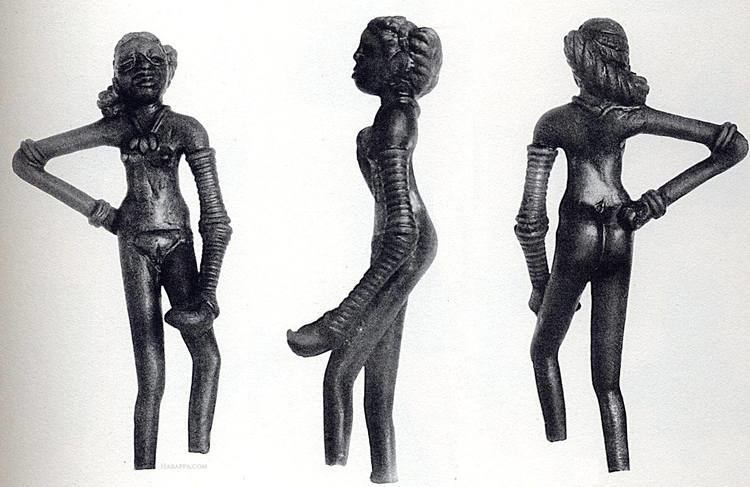 | ||
Dimensions 10.5 cm × 5 cm (4 1/8 in × 2 in ) Location National Museum, New Delhi, Delhi Similar Bronze, Other artwork | ||
Description
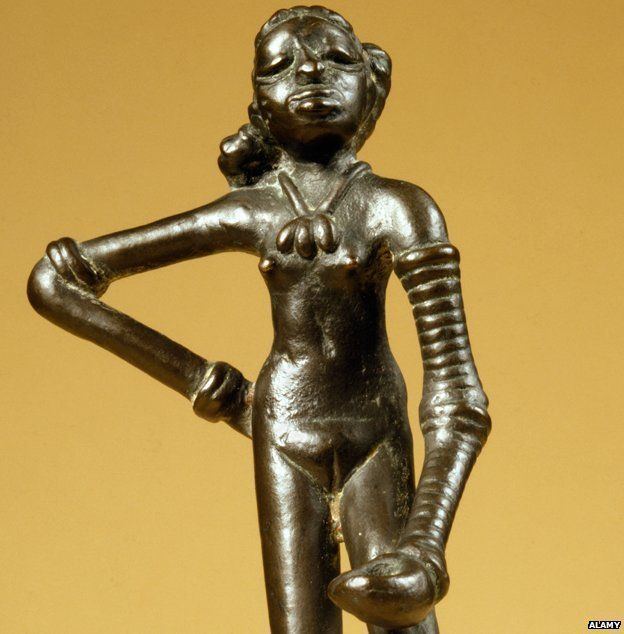
A bronze statuette Dancing Girl is 10.5 centimetres (4.1 in) high and about 4,500 years old. It was found in the "HR area" of Mohenjo-daro in 1926 by Ernest Mackay. Although it is in a standing position, it was named "Dancing Girl" with an assumption of her profession. This is one of two bronze art works found at Mohenjo-daro that show more flexible features when compared to other more formal poses. The girl is naked, wears a number of bangles and a necklace and is shown in a natural standing position with one hand on her hip. She wears 24 to 25 bangles on her left arm and 4 bangles on her right arm, and some object was held in her left hand, which is resting on her thigh; both arms are unusually long. One arm completely filled with bangles which is similar to Banjara lady.
Contents
Expert opinions
In 1973, British archaeologist Mortimer Wheeler described the item as his favorite statuette:
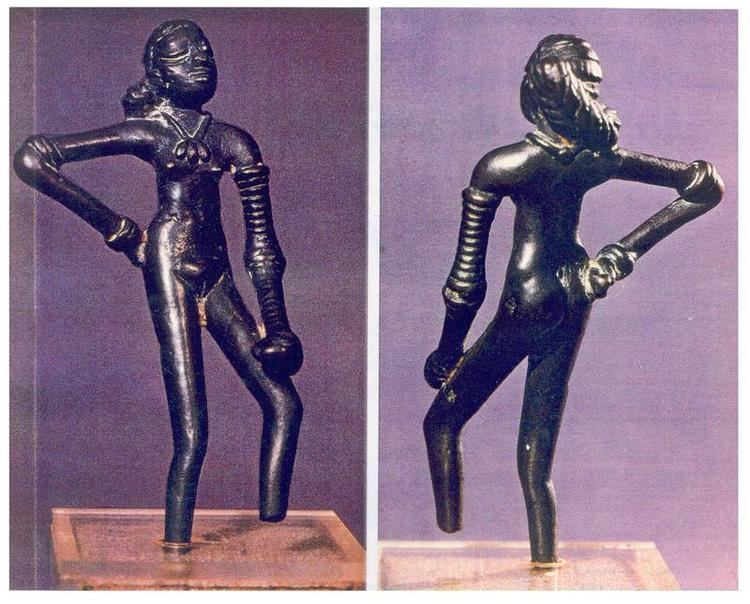
"She's about fifteen years old I should think, not more, but she stands there with bangles all the way up her arm and nothing else on. A girl perfectly, for the moment, perfectly confident of herself and the world. There's nothing like her, I think, in the world."
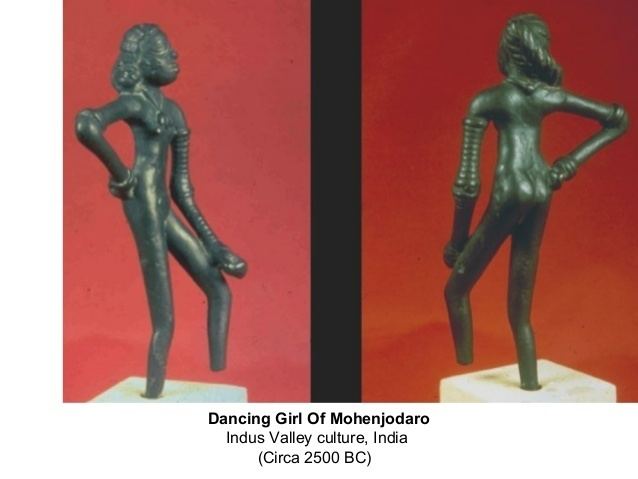
John Marshall, another archeologist at Mohenjo-daro, described the figure as "a young girl, her hand on her hip in a half-impudent posture, and legs slightly forward as she beats time to the music with her legs and feet". The archaeologist Gregory Possehl described Dancing Girl as "the most captivating piece of art from an Indus site" and qualified the description of her as a dancer by stating that, "We may not be certain that she was a dancer, but she was good at what she did and she knew it."

The statue led to two important discoveries about the civilization: first that they knew metal blending, casting and other sophisticated methods, and secondly that entertainment, especially dance was part of the culture. The bronze girl was made using the lost-wax casting technique and shows the expertise of the people in making bronze works during that time. The statue is displayed at National Museum, New Delhi. A similar bronze statuette was found by Mackay during his final full season of 1930–31 at DK-G area in a house at Mohenjo-daro. The preservation, as well as quality of craftsmanship, is inferior to that of the well known Dancing Girl. This second bronze female figure is displayed at Karachi Museum, Pakistan.
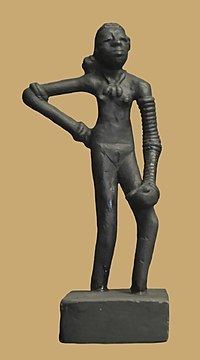
An engraving on a piece of red potsherd, discovered at Bhirrana, India, a Harappan site in Fatehabad district in Haryana, shows an image that is evocative of Dancing Girl. The excavation team leader, L. S. Rao, Superintending Archaeologist, Excavation Branch, ASI, remarked that, “... the delineation [of the lines in the potsherd] is so true to the stance, including the disposition of the hands, of the bronze that it appears that the craftsman of Bhirrana had first-hand knowledge of the former”.
Pakistan's demand
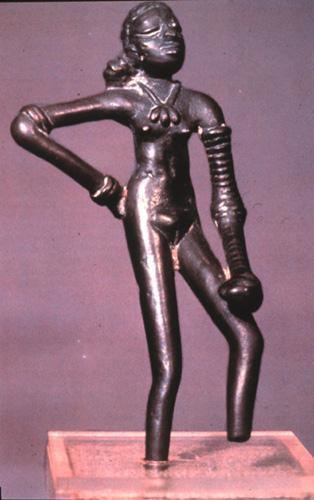
Some Pakistani politicians and experts have demanded that the Dancing Girl be "returned" to Pakistan. In 2016 Pakistani barrister, Javed Iqbal Jaffery, petitioned the Lahore High Court for the return of the statue, claiming that it had been "taken from Pakistan 60 years ago on the request of the National Arts Council in Delhi but never returned." Another version of events, however, "suggests the statue was taken to Delhi before Partition by Mortimer Wheeler".
